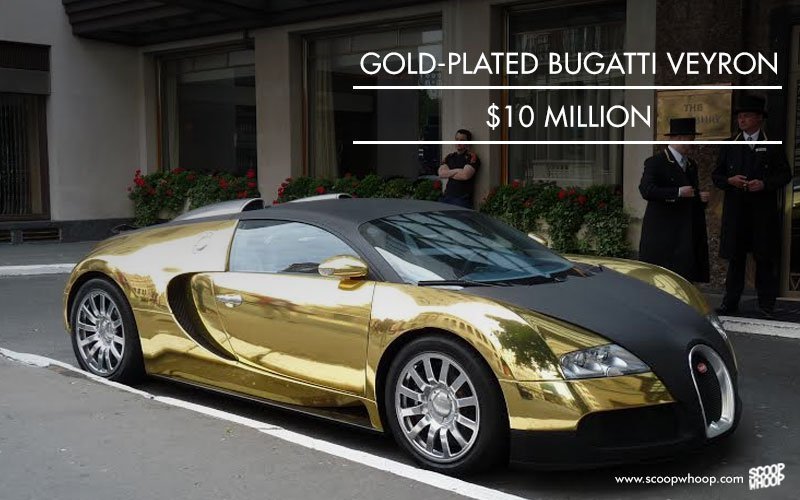What if I told you that the tiniest things can carry some of the biggest price tags? Sounds crazy, right? But it’s true! The most expensive smallest thing in the world is a concept that might leave you scratching your head or reaching for your wallet. Imagine something so small it could fit on the tip of a needle, yet it costs more than a luxury mansion. Today, we’re diving deep into this fascinating topic, and trust me, it’s going to blow your mind!
From microscopic diamonds to rare isotopes and even subatomic particles, the world of tiny treasures is more extravagant than you think. This isn’t just about size—it’s about rarity, value, and the sheer awe of what science and nature have created. Whether you’re a collector, a scientist, or just someone curious about the world’s extremes, this article is going to take you on a wild ride.
So buckle up, because we’re about to explore the most expensive smallest thing in the world, uncovering its secrets, its significance, and why it’s worth every penny—or in this case, millions of them!
Read also:Emmanuel Adebayor Net Worth A Deep Dive Into The Wealth Of A Football Legend
Daftar Isi
- What is the Most Expensive Smallest Thing?
- History of the Tiniest Treasures
- Scientific Wonders: Exploring Microscopic Phenomena
- Rare Materials That Cost a Fortune
- Economic Impact of Tiny Luxuries
- Collector's Corner: Why People Pay Through the Nose
- Real-World Applications of the Smallest Things
- Environmental Concerns Surrounding Tiny Luxuries
- Future Predictions: What’s Next for the Tiny World?
- Conclusion: Why the Smallest Things Matter the Most
What is the Most Expensive Smallest Thing?
Alright, let’s get straight to the point. What exactly is the most expensive smallest thing in the world? Well, buckle up because this one’s going to surprise you. It’s not a diamond, not a piece of gold, and definitely not a tiny sculpture made by some genius artist. Nope, the crown goes to something much more peculiar—antimatter.
Antimatter is basically the opposite of regular matter. Think of it as the evil twin of everything that exists in our universe. And here’s the kicker: producing even the tiniest amount of antimatter costs a ridiculous amount of money. How much? Try $62.5 trillion per gram. Yes, you read that right. That’s more expensive than a spaceship, a private island, or even a lifetime supply of caviar.
Why Is Antimatter So Expensive?
Let me break it down for you. Antimatter is insanely hard to produce. Scientists need massive particle accelerators, like the ones at CERN, to create even the tiniest specks of it. And once they do, it’s super difficult to store because antimatter and matter annihilate each other when they come into contact. So, not only is it expensive to make, but it’s also a pain to keep around.
History of the Tiniest Treasures
Humans have always been fascinated by the small stuff. From ancient civilizations collecting rare gemstones to modern scientists discovering subatomic particles, the pursuit of tiny treasures has been a constant throughout history. But why? What drives us to value the smallest things so highly?
Back in the day, people prized things like microscopic pearls or tiny sculptures carved from ivory. These items were seen as symbols of wealth and power. Fast forward to today, and we’re still obsessed with the tiny but mighty. Whether it’s a microchip that powers your smartphone or a speck of antimatter that could revolutionize energy production, the smallest things continue to captivate our imaginations.
Key Moments in the History of Tiny Luxuries
- The discovery of diamonds in ancient India
- The invention of the microscope in the 17th century
- The first detection of antimatter in the 1930s
- The rise of nanotechnology in the 21st century
Scientific Wonders: Exploring Microscopic Phenomena
Science has given us some mind-blowing insights into the microscopic world. From atoms to quarks, there’s a whole universe hiding within the tiniest particles. And let’s not forget about quantum mechanics—the field of physics that studies the behavior of particles at the smallest scales. It’s wild stuff, man!
Read also:Chris Sails Zodiac Sign Unlocking The Cosmic Secrets Behind This Talented Soul
For example, did you know that a single atom can be split to release massive amounts of energy? That’s the principle behind nuclear power. Or how about graphene—a material so thin it’s considered two-dimensional, yet it’s stronger than steel? The world of microscopic wonders is vast, and we’re only scratching the surface.
Top Microscopic Phenomena to Know About
- Quantum entanglement: When particles become interconnected
- Graphene: The super-strong, super-light material of the future
- Nanobots: Tiny machines that could revolutionize medicine
Rare Materials That Cost a Fortune
Let’s talk about some of the rarest materials on the planet. These aren’t your average gold or silver. We’re talking about stuff that’s so rare, it makes diamonds look like dime-store trinkets. Take californium-252, for instance. This radioactive isotope is used in nuclear reactors and costs around $27 million per gram. Or how about buckminsterfullerene, a form of carbon that’s shaped like a soccer ball and costs over $100,000 per gram?
These materials aren’t just expensive because they’re rare. They also have unique properties that make them incredibly valuable for scientific research and industrial applications. So, while they might not fit in your wallet, they’re definitely worth their weight in gold—or more.
Why Are Rare Materials So Valuable?
It’s all about supply and demand, baby. When something is scarce and has practical uses, its value skyrockets. Plus, the process of extracting and refining these materials can be incredibly complex and costly. It’s like trying to find a needle in a haystack, except the haystack is the entire planet.
Economic Impact of Tiny Luxuries
The market for tiny luxuries is bigger than you might think. From high-end jewelry to cutting-edge technology, the smallest things can have a massive impact on the global economy. For example, the semiconductor industry, which relies on tiny microchips, is worth hundreds of billions of dollars. And let’s not forget about the luxury goods market, where miniature masterpieces fetch astronomical prices.
But it’s not just about money. The pursuit of tiny luxuries drives innovation and pushes the boundaries of what’s possible. Whether it’s developing new materials or improving existing ones, the quest for the smallest and best drives progress in countless industries.
Industries Shaped by Tiny Luxuries
- Technology: Microchips and nanotechnology
- Jewelry: Diamonds, gemstones, and rare metals
- Healthcare: Nanobots and advanced medical devices
Collector's Corner: Why People Pay Through the Nose
So, why do people shell out insane amounts of money for tiny treasures? It’s all about exclusivity, folks. Owning something rare and valuable gives people a sense of status and accomplishment. Plus, there’s the thrill of the hunt—finding that one-of-a-kind item that no one else has.
Take the example of collectors who pay millions for rare stamps or coins. These items might be small, but their historical and cultural significance makes them priceless. And let’s not forget about art collectors who snap up tiny sculptures or paintings for astronomical sums. It’s not just about the size—it’s about the story behind the object.
Real-World Applications of the Smallest Things
Okay, so we’ve talked about the cost and the fascination, but what about the practical uses of the smallest things? Turns out, they’re pretty darn useful. Take antimatter, for example. While it might be expensive to produce, it has the potential to revolutionize energy production. Imagine a world where we could harness the power of antimatter to create clean, limitless energy. That’s a game-changer, my friend.
Then there’s nanotechnology, which is already being used in everything from medicine to electronics. Nanobots could one day be used to target cancer cells, while nanomaterials are making our gadgets faster, lighter, and more efficient. The possibilities are endless, and the smallest things are leading the charge.
Innovations Powered by Tiny Technologies
- Medical breakthroughs: Nanobots and targeted drug delivery
- Energy solutions: Antimatter and nuclear fusion
- Consumer electronics: Smaller, faster, and more powerful devices
Environmental Concerns Surrounding Tiny Luxuries
Of course, with great power comes great responsibility. The production of some of these tiny luxuries can have a significant environmental impact. Mining rare earth metals, for example, can lead to habitat destruction and pollution. And let’s not forget about the energy required to produce antimatter or other exotic materials.
But it’s not all doom and gloom. Many scientists and engineers are working on ways to make the production of these materials more sustainable. From developing greener mining techniques to finding alternative sources of energy, there’s hope for a more environmentally friendly future.
Future Predictions: What’s Next for the Tiny World?
So, what’s on the horizon for the world of tiny luxuries? Well, the future looks bright—or should I say, small? Scientists are constantly pushing the boundaries of what’s possible, and the next big breakthrough could be just around the corner. Imagine a world where we can create antimatter on demand or where nanobots can repair our bodies at the cellular level. It’s a future that’s both exciting and a little bit scary.
And let’s not forget about the economic implications. As technology advances, the cost of producing these tiny treasures could decrease, making them more accessible to the average person. Who knows? Maybe one day, owning a piece of antimatter will be as common as owning a smartphone.
Conclusion: Why the Smallest Things Matter the Most
So, there you have it—the most expensive smallest thing in the world and everything that goes along with it. From antimatter to nanotechnology, the tiniest things can have the biggest impact. They drive innovation, shape industries, and push the boundaries of what’s possible. And while they might be small, their value is anything but.
So, the next time you’re marveling at the wonders of the microscopic world, remember this: size doesn’t matter. It’s the impact that counts. And if you’ve learned anything from this article, it’s that the smallest things can truly change the world.
Now, I want to hear from you! Leave a comment below and let me know what you think about the most expensive smallest thing in the world. Do you have a favorite tiny luxury? Or maybe you have some ideas for future innovations. Whatever it is, I’d love to hear your thoughts. And don’t forget to share this article with your friends—knowledge is power, and the power of the small is something we should all celebrate!


